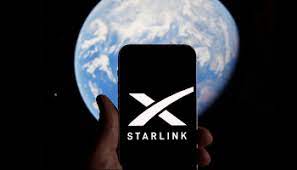SpaceX’s Starlink, a broadband satellite internet service, has announced a significant milestone, surpassing 2 million active customers worldwide.
This achievement reflects the increasing demand for high-speed internet access in remote and underserved areas, as well as the rapid evolution of Starlink since its inception in 2019.
Starlink’s official announcement highlighted its global reach, emphasizing that it is now available on all seven continents, serving over 60 countries and numerous markets. The company also claimed that it offers speeds of up to 500 Mbps and unlimited data for most of its plans.
To put this in perspective, AT&T, a major U.S. telecommunications company, had over 15 million broadband internet subscribers in the United States alone by the end of 20221, with an average speed of 108 Mbps. Verizon, another telecommunications giant, boasted over 7 million subscribers during the same period, with an average speed of 115 Mbps.
Starlink’s goal is not only to provide fast internet, but also to provide internet with consistently low latency of less than 20 milliseconds to major data centers within a region. Low latency is crucial for real-time applications and a smoother online experience.
However, achieving consistently low latency for satellite internet is a formidable challenge, as it depends on factors such as the number and location of satellites, ground stations, inter-satellite links, and user terminals. SpaceX’s CEO, Elon Musk, recently acknowledged this challenge but expressed determination to reach this goal.
Read also: Zimbabwe confirms Starlink’s license application
Starlink’s Financial Challenges
Despite its rapid growth and global reach, the financial picture for Starlink appears challenging. Earlier this year, The Wall Street Journal reported that Starlink generated $1.4 billion in revenue for 2022, falling significantly short of the company’s earlier estimates. In a presentation used to attract investors in 2015, SpaceX had predicted that the segment would generate nearly $12 billion in revenue and $7 billion in operating profit in 2022. This contrast highlights the complexities and uncertainties of the satellite internet industry.
Starlink’s achievement of 2 million active customers underscores the increasing demand for reliable internet access worldwide, particularly in areas with limited infrastructure. While financial challenges persist, the company’s global footprint and commitment to improving latency position it as a significant player in the evolving landscape of satellite internet.
Elon Musk’s Starlink faces regulatory challenges with specific African countries
How does Starlink compare to other satellite internet providers?
Starlink is a satellite internet service developed by SpaceX, a company founded by Elon Musk. It aims to provide high-speed internet access to remote and rural areas of the world by using a constellation of thousands of low-Earth orbit satellites. Starlink claims to offer speeds of up to 500 Mbps and unlimited data for most of its plans. It also has a goal of achieving low latency of less than 20 milliseconds to major data centers within a region.
Other satellite internet providers include HughesNet, Viasat, OneWeb, Telesat, Kuiper Systems, Telstra, Freedomsat, and NBN Sky Muster. These providers vary in terms of their coverage, speed, latency, data caps, and pricing. Here is a brief comparison of some of the major competitors:
HughesNet: HughesNet is the largest broadband satellite internet service in the United States, with over 1.5 million subscribers. It offers speeds of up to 25 Mbps and data plans ranging from 10 GB to 50 GB per month. It has a latency of around 600 milliseconds.
Viasat: Viasat is the second largest broadband satellite internet service in the United States, with over 590,000 subscribers. It offers speeds of up to 100 Mbps and unlimited data plans with varying speeds depending on the time of day. It has a latency of around 700 milliseconds.
OneWeb: OneWeb is a global satellite internet service that plans to launch a constellation of 648 satellites in low-Earth orbit by the end of 2022. It aims to provide speeds of up to 200 Mbps and low latency of around 30 milliseconds. It has not announced its pricing or availability yet.
Telesat: Telesat is a Canadian satellite internet service that plans to launch a constellation of 298 satellites in low-Earth orbit by 2023. It aims to provide speeds of up to 1.4 Gbps and low latency of around 20 milliseconds. It has not announced its pricing or availability yet.
Kuiper Systems: Kuiper Systems is a subsidiary of Amazon that plans to launch a constellation of 3,236 satellites in low-Earth orbit by 2026. It aims to provide speeds of up to 400 Mbps and low latency of around 35 milliseconds. It has not announced its pricing or availability yet.




